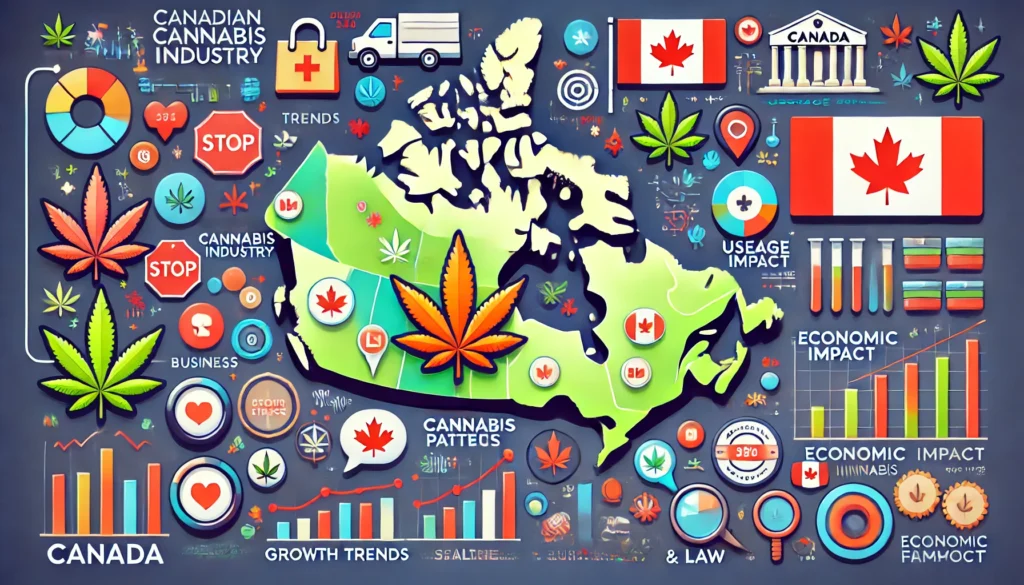As cannabis continues to be a hot topic in Canada after its legalization for recreational use back in 2018. Naked cannabis, as a concept, can mean transparent business practices in the cannabis industry or pure and unadulterated cannabis products. This blog navigates through the present scenario of cannabis in Canada, its usage trends and legislations along with exploring consumer behaviors over time.
Legalization of Naked Cannabis in Canada
Canada on Oct. 17, 2018 became the first major industrialized nation to legalize recreational cannabis The Cannabis Act created the framework for legalization of cannabis in Canada to control its production, distribution, and sale division. The main objectives were to keep pot away from kids and profits out of a flourishing black market in which criminals do business with money made by enriching themselves by trafficking guns, hard drugs such as cocaine.
Usage Trends and Demographics
Cannabis use in Canada has evolved considerably over the years. Approximately 22% of Canadians aged 15 years and older said they consumed Cannabis in the past year during 2021. The increase in the better-than-Earth Class frequency of MMT overall was roughly proportional to population; hooking rates were outliers as higher than those figures for populations like Alberta, British Columbia (and less so: Ontario and Atlantic provinces), while usage rates by Quebecers remained comparably low.
Age and Gender Differences
Use of cannabis is highest among those aged 18-24. One surprise: the legalization didn’t lead to a big increase in pot smoking by 15-17-year-olds. The 2023 Canadian Cannabis Survey (CCS) revealed a consistent percentage of about 25% daily or almost daily use, with males generally using more than females.
Impact of the COVID-19 Pandemic
Cannabis consumption patterns were changed during the pandemic, spurred by COVID-19. Research suggested the combination of lockdown stress and disrupted routines caused people to use more cannabis. The question is whether that premium will continue after the pandemic.
Economic Impact
Cannabis sector has generated a magnificent economic footprint post-legalization The industry was valued at $6.4 billion in 2018, increasing to nearly $11 billion by 2023. This now means that legal sales have been gradually displacing illegal ones, with the first half of 2023 seeing over 70% of cannabis being consumed in Canada from a legal source.
Health and Safety
A key component of the Cannabis Act, this was aimed at protecting Canadians by making sure all cannabis products are safe and licensed. The legal cannabis products have to be tested for all sorts of contaminants like bacteria, molds and pesticides. Even still, public health campaigns are underway educating Canadians on the potential risks of cannabis use and its effects on mental health, as well as efforts to reduce driving under the influence.
Legal and Regulatory Developments
Cannabis is a plant associated with change and that includes the legislative environment. In September 2022, the Government of Canada began a legislative review with consultations on how this Cannabis Act has taken hold. Main accomplishments identified in the review were a 95% drop in charges for cannabis possession and successful migration of consumers to legal supply. Still, obstacles remain – namely around the accessibility and affordability of legal cannabis.
Consumer Behaviors and Preferences
Canadians are consuming cannabis in a new way. Smoking, while still the most popular way to partake of cannabis, is gradually losing market share to formats such as edibles and vaping. According to the 2023 CCS, marijuana was most commonly smoked by users (63%), followed closely behind with edibles consumption at 52% and vape pens or e-cigarettes at 33%.
The Future of Cannabis in Canada
While the future of Canada’s cannabis industry is bright, it appears that legalization has opened a Pandora’s box. Various legislation is still under scrutiny and there are reloading public health initiatives aimed at refining the regulatory framework to meet critical objectives for keeping people safe while not starving the growth of a burgeoning industry. We expect consumer preferences to continue shifting, in large part due to the ongoing regulatory shifts and evolving market offerings.
Conclusion
While the future of Canada’s cannabis industry is bright, it appears that legalization has opened a Pandora’s box. Various legislation is still under scrutiny and there are reloading public health initiatives aimed at refining the regulatory framework to meet critical objectives for keeping people safe while not starving the growth of a burgeoning industry. We expect consumer preferences to continue shifting, in large part due to the ongoing regulatory shifts and evolving market offerings. Puff Pass is the thc distillate straight goods supply.

